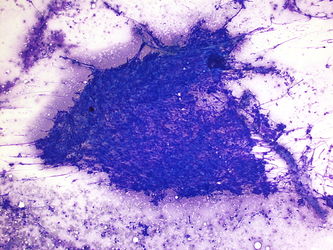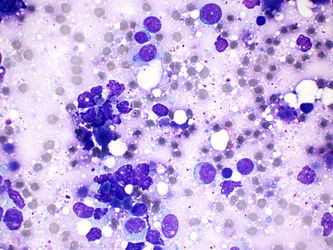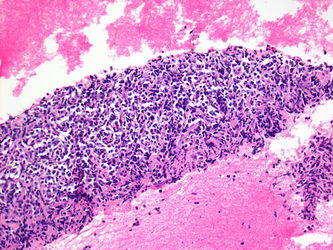Cytology
Resident Questions
- Lymphoma
- Occurs in elderly
- Diffuse large B cell lymphoma is the most common
- Presentation includes abdominal pain and jaundice due to bile duct obstruction
- Pancreatic primary lymphoma accounts for less than 0.5% of all pancreatic malignancies and 1% of extranodal lymphomas
- Secondary involvement of the pancreas by lymphoma has been reported to occur in 5-30% of all lymphomas.
- Cellular specimen
- Monotonous population of cells that are discohesive
- Look for lymphoglandular bodies in the background
- Cells will have high N/C ratios with round nuclei
- Mitosis
- Karryorrhexis
- Lack nuclear molding
- Rare tissue fragments
- Pancreatic neuroendocrine tumor
- Uniform, small/medium sized, round, plasmacytoid cells
- Cells in groups
- Scant cytoplasm
- Salt and pepper chromatin
- Positive CD56, Synaptophysin, Chromogranin
- Pancreatic duct adenocarcinoma (small cell pattern)
- Generally cellular
- Groups and single small/medium cells
- Irregular nuclear membranes and variable cytoplasm (scant/moderate, vacuolated/dense)
- Positive CEA, Cytokeratin, EMA
- Lymphoepithelial cyst
- Rare benign cystic lesion with lymphocytes
- Most occur in male patients who are in the 5th decade
- Unilocular or multilocular lined by squamous epithelium and have numerous lymphocytes
- Cytology will have many lymphocytes and squamous cells
- Not associated with immunosuppression
- Flow cytometry is helpful when lymphoma is suspected
Click here to toggle the Additional Images.
Additional Images
CytologicallyYoursUnknowns201401-04-07.JPG
CytologicallyYoursUnknowns201401-04-08.JPG
CytologicallyYoursUnknowns201401-04-09.JPG
CytologicallyYoursUnknowns201401-04-10.JPG





